Oppo Find N5 review

Display
The Oppo Find N5 has two gorgeous OLED displays at its disposal. Both offer 120Hz refresh rate and LTPO tech.
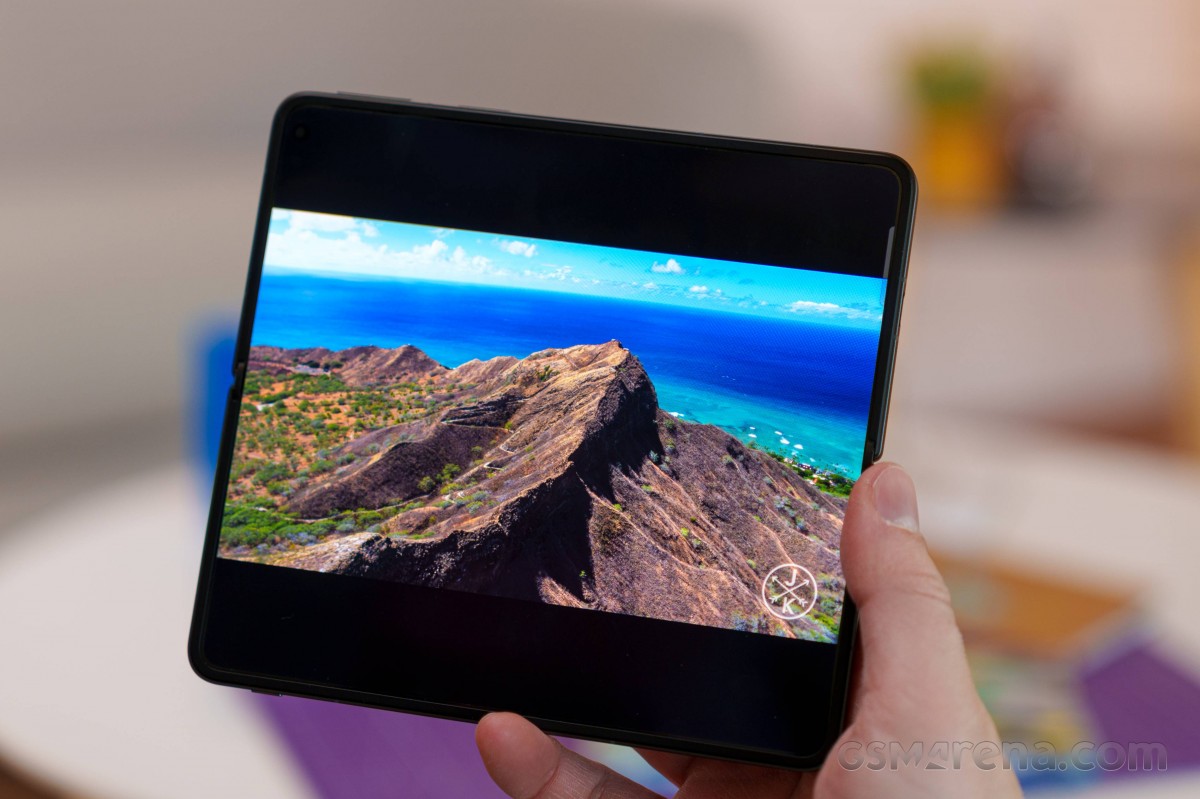
Oppo claims that the inner display of the Find N5 can do up to 1,400 nits outdoors and has a peak of 2,100 nits. We did our standardized testing and managed some impressive figures. The inner display peaked at around 595 nits by maxing out the slider and at around 1188 nits in max auto mode. As for the cover display, it managed around 584 nits on the slider and 1178 nits in bright conditions.
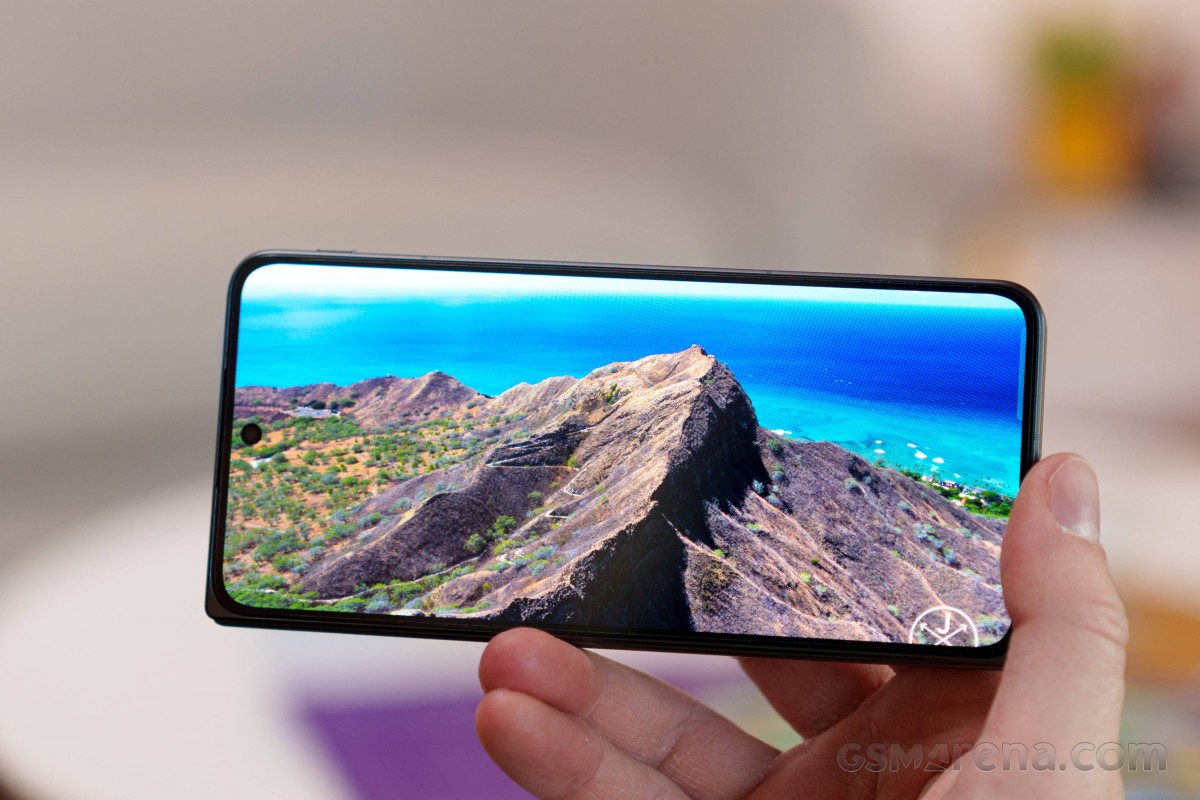
Not only are the raw brightness figures impressive, making for a perfectly comfortable outdoor viewing experience, but the two display outputs are also very well-matched, which is impressive in its own right.
Both displays on the Find N5 are actually compatible with the Oppo Pen, which is a nice productivity touch. Though, you do have to buy the stylus separately.
As mentioned, both displays on the Find N5 can refresh at up to 120Hz and offer LTPO tech for dynamic refresh rate adjustment to as low as 1Hz. Generally, the phone does a great job controlling its refresh rate, lowering it when nothing is happening on screen and then shooting it up to 120 Hz for things like web page scrolling and animations. Video playback usually gets detected, and the refresh rate gets set to 60Hz, which is fine.
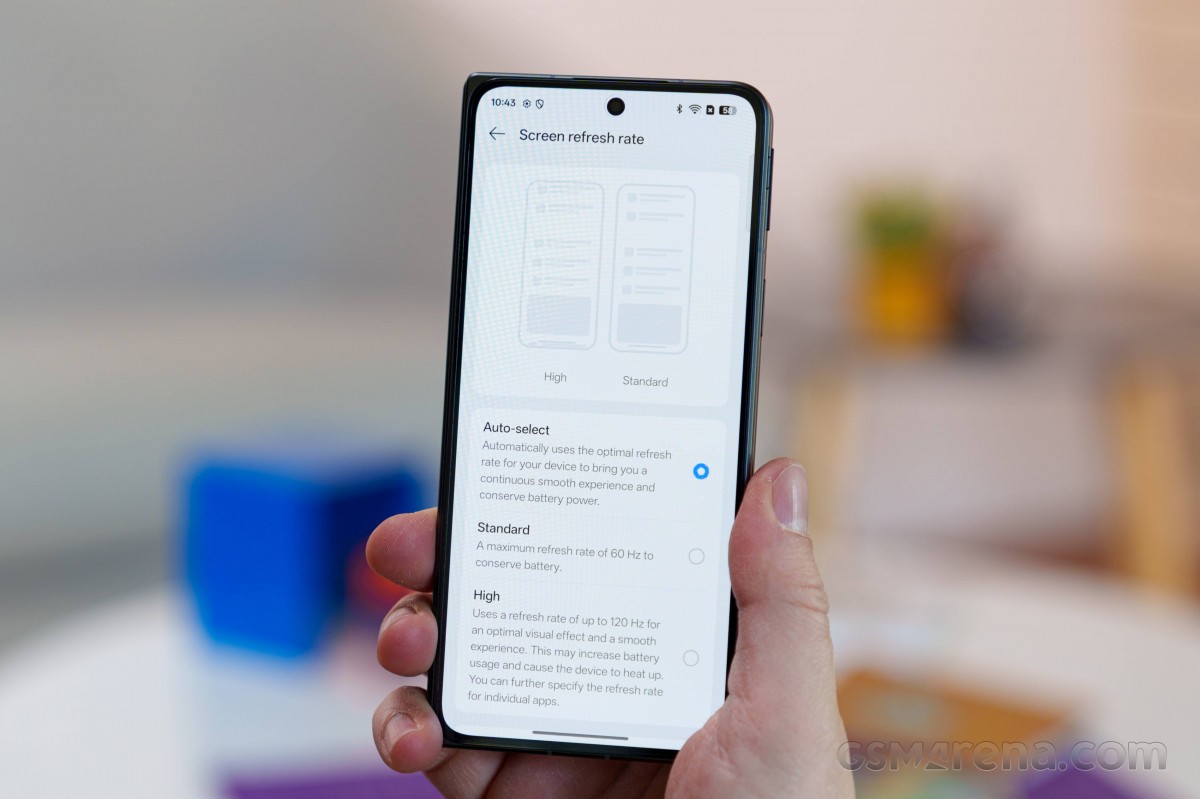
We also tried some high refresh rate gaming and had success with most titles. But while the inner display, like the cover one, had no trouble bumping its refresh rate up, few games managed to properly scale their UI elements to match the odd aspect ratio, which is something perhaps worth considering.
Both screens support 2160Hz PWM.
Both displays on the Find N5 offer Dolby Vision support. The phone also supports the highest possible Widevine L1 DRM, allowing apps like Netflix to offer up FullHD streams.
Battery Life
Our new Active Use Score is an estimate of how long the battery will last if you use the device with a mix of all four test activities. You can adjust the calculation based on your usage pattern using the sliders below. You can read about our current battery life testing procedure here. For a comprehensive list of all tested devices so far, head this way.
The Oppo Find N5 has a pretty large 5,600 mAh Si/C battery on board. It is a class-leader in this respect. Hence, we went into battery testing with high expectations and, frankly, were not disappointed.
The Find N5 managed a great Active Use Score of 13:16 hours while using the large inside display. That is quite an achievement, and it includes individual scores of almost 12 hours of web browsing, 15 hours of video streaming, and 8 hours of gaming.
If you only limit yourself to using the cover display on the phone, you can end up with an even more impressive Active Use Score of 15:49 hours.
Charging speed
The Oppo Find N5 advertises 80W SuperVOOC charging support. As we mentioned, some markets are going to get a charger in the box, while others won't be as lucky. With any other charger than SuperVOOC, you can expect the phone to max out at a mere 13W (not kidding).
Oppo claims that a full charge should take 47 minutes. The charger that came with our unit is rated for 80W as well and uses a proprietary USB Type-A to Type-C cable.
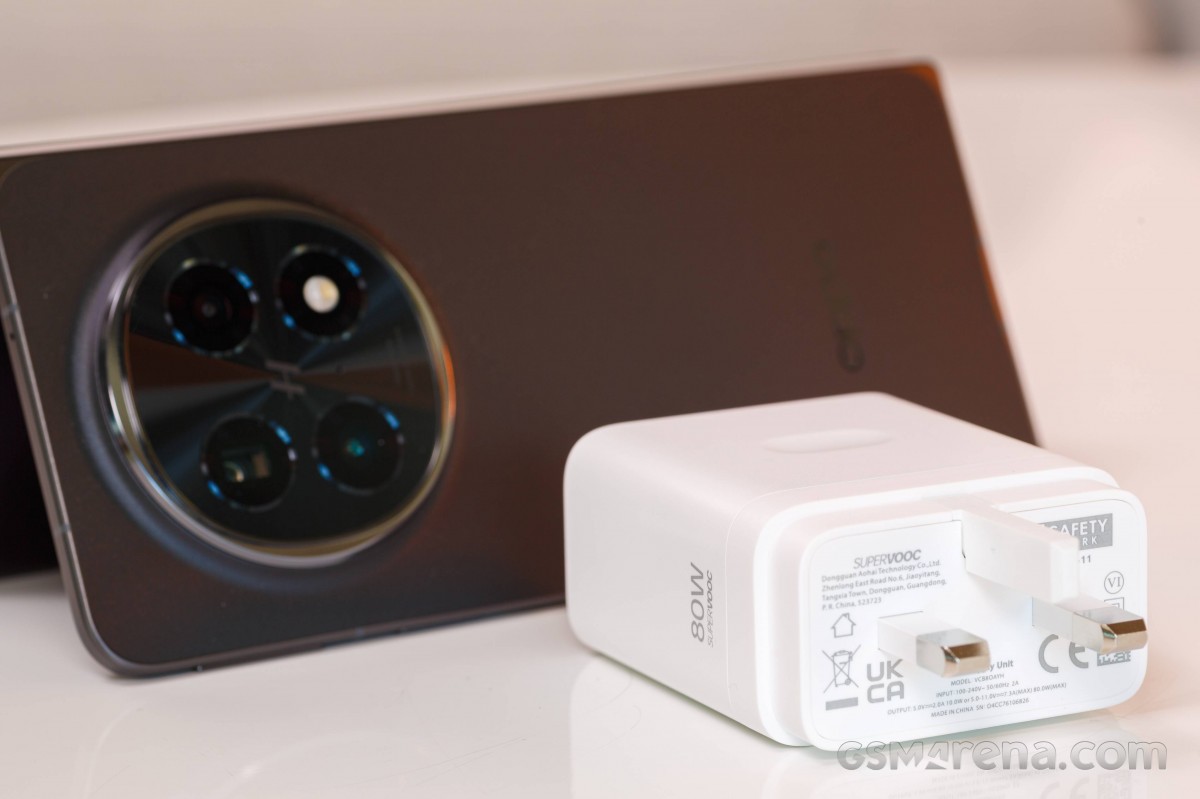
We did our standardized testing and never saw the phone reach anything near 80W while charging. In fact, it peaked at around 60W (8.5V/7.1A) for a brief period and charged at around 32W (8.1V/4A) for most of the charging cycle. This sort of explains why the actual charging speed by the Find N5 is pretty close to Xiaomi's 67W charging and Huawei and Honor's 66W.
That is not to say that the Find N5 is a slow charger. Sure, it is far from chart-topping, but it still holds its own well. It goes from dead to around 42% in 15 minutes, then 72% in 30 minutes, and a full charge takes right around 52 minutes.
Speakers - loudness and quality
The Oppo Find N5 has a stereo speaker setup. There are two symmetrical speakers - one on the top and one on the bottom. This offers a fairly good balance when the phone is folded. When unfolded, both speakers end up on the left half of the device, which is not ideal but still pretty decent.
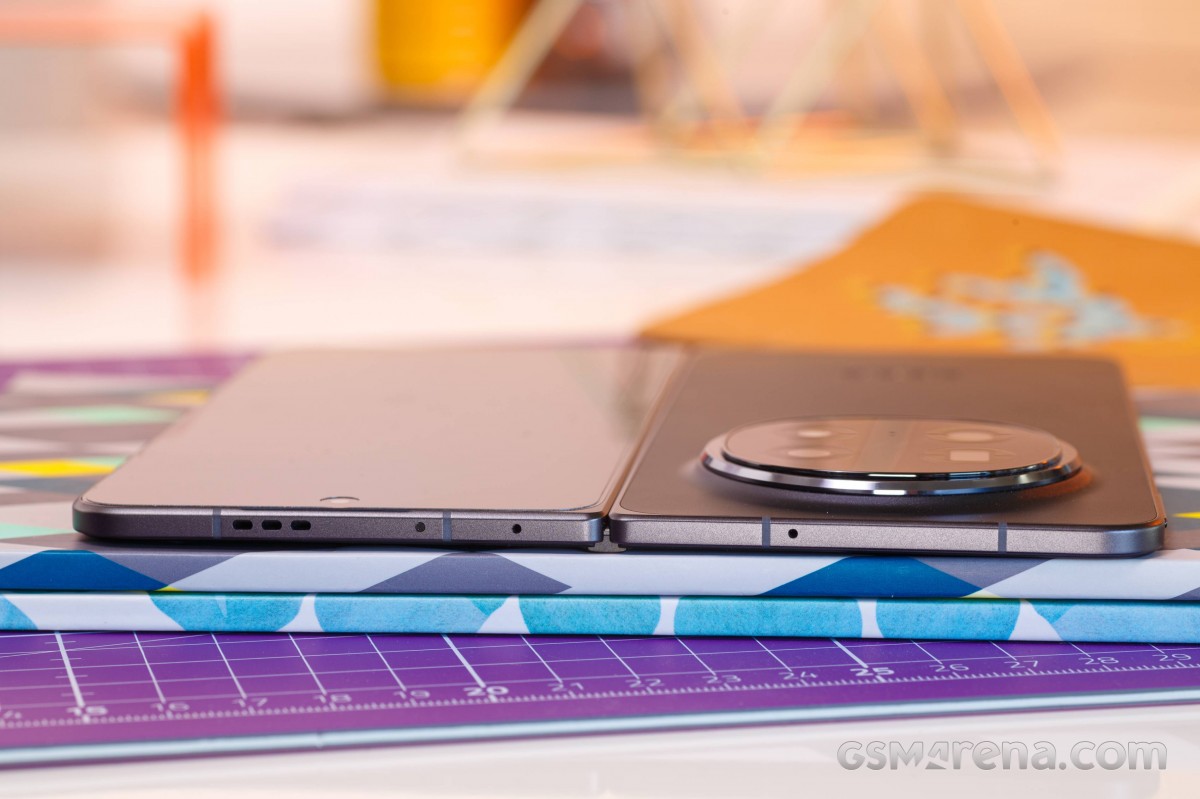
Compared to its Find N3 predecessor, the Find N5 has clearly gotten quieter, which is not ideal. Still, it managed to get a good rating in our testing.
On a more positive note, the clarity is quite good. Mids and vocals, in particular, come out sounding crisp. Highs are not particularly distorted either, even at maximum volume.
Use the Playback controls to listen to the phone sample recordings (best use headphones). We measure the average loudness of the speakers in LUFS. A lower absolute value means a louder sound. A look at the frequency response chart will tell you how far off the ideal "0db" flat line is the reproduction of the bass, treble, and mid frequencies. You can add more phones to compare how they differ. The scores and ratings are not comparable with our older loudspeaker test. Learn more about how we test here.
Connectivity
The Find N5 is a dual SIM device with two Nano-SIM card slots, both with SA/NSA Sub-6 simultaneous 5G connectivity. There is eSIM support as well.
The phone has GPS (L1+L5), GLONASS (G1), BDS (B1I+B1c+B2a), GALILEO (E1+E5a), QZSS (L1+L5) support for positioning.
Local connectivity is covered by tri-band Wi-Fi 7. There is Bluetooth 5.3 on board with LE support and aptX HD. You also get NFC and an Infrared port.
There is no FM radio on board, and there is no 3.5mm audio jack.
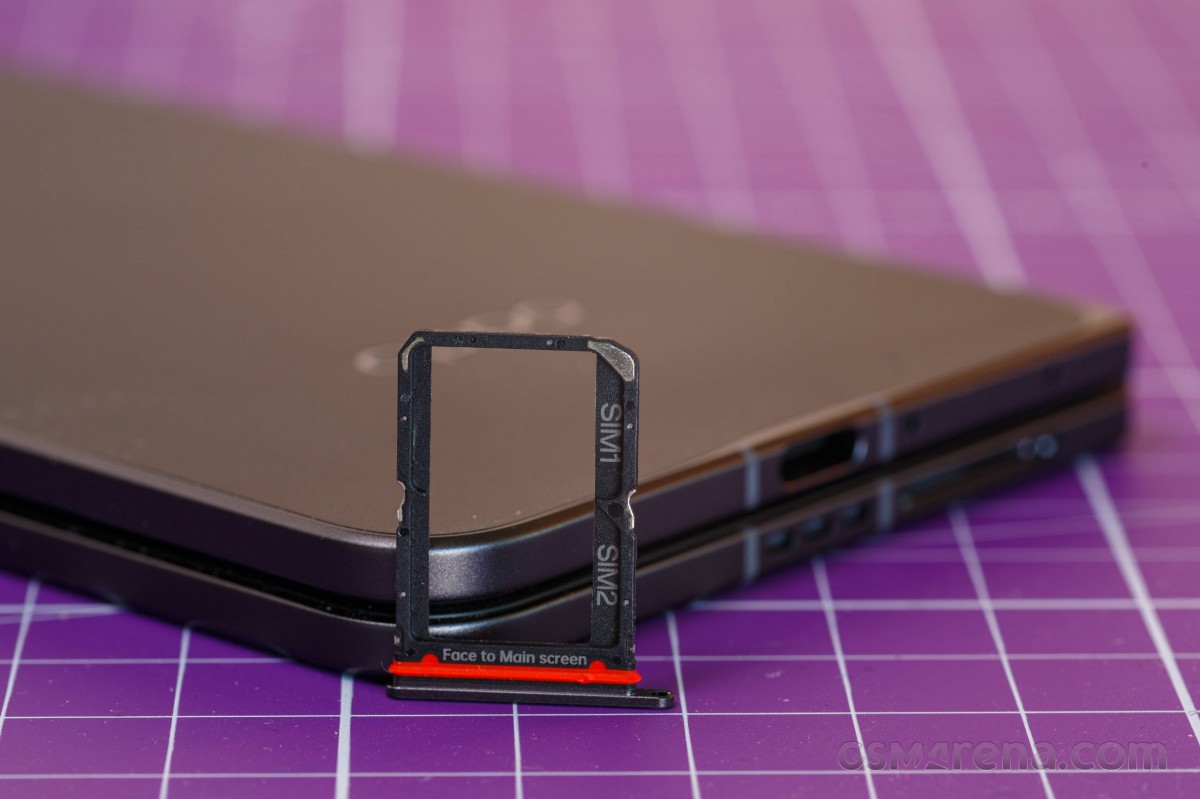
The USB port on the phone is backed up by a USB 2.0 data connection, which is, to say, a maximum of 480 Mbps. On the plus side, the port supports Display Port (DP) video output via USB Alt mode. There is OTG/Host support as well.
The Find N5 has a pretty large set of sensors on board. There is a BOSCH bmi26x accelerometer and gyroscope combo. There is an akm ak0991x magnetometer and compass combo. There are OPLUS-branded light and hardware proximity sensors underneath both the outside and inside displays.
Reader comments
- Anonymous
- 15 Apr 2025
- 6cm
5 months? Oppo find n5 literally official announced on February in China and end of February in Singapore for international markets. Assume u bought it around that time , its not even 5 months yet. And as far as i remember as long you got the warrant...
- Vildan
- 25 Mar 2025
- pwI
In review you wrote about 1 Gb memory and about eSim option. But Global version doesn't have 1Gb memory and China version doesn't support eSim. So, Oppo Find N5 with 1 Gb of memory and eSim just unreal nowdays. Or you know something more? ...
- Anonymous
- 20 Mar 2025
- 8@$
I Dont recommend Oppo find nX. The screen stop working after 5 months of use. I bought 2 and both with same problem. They didnt accept the apply guarantee. Bad product...
















